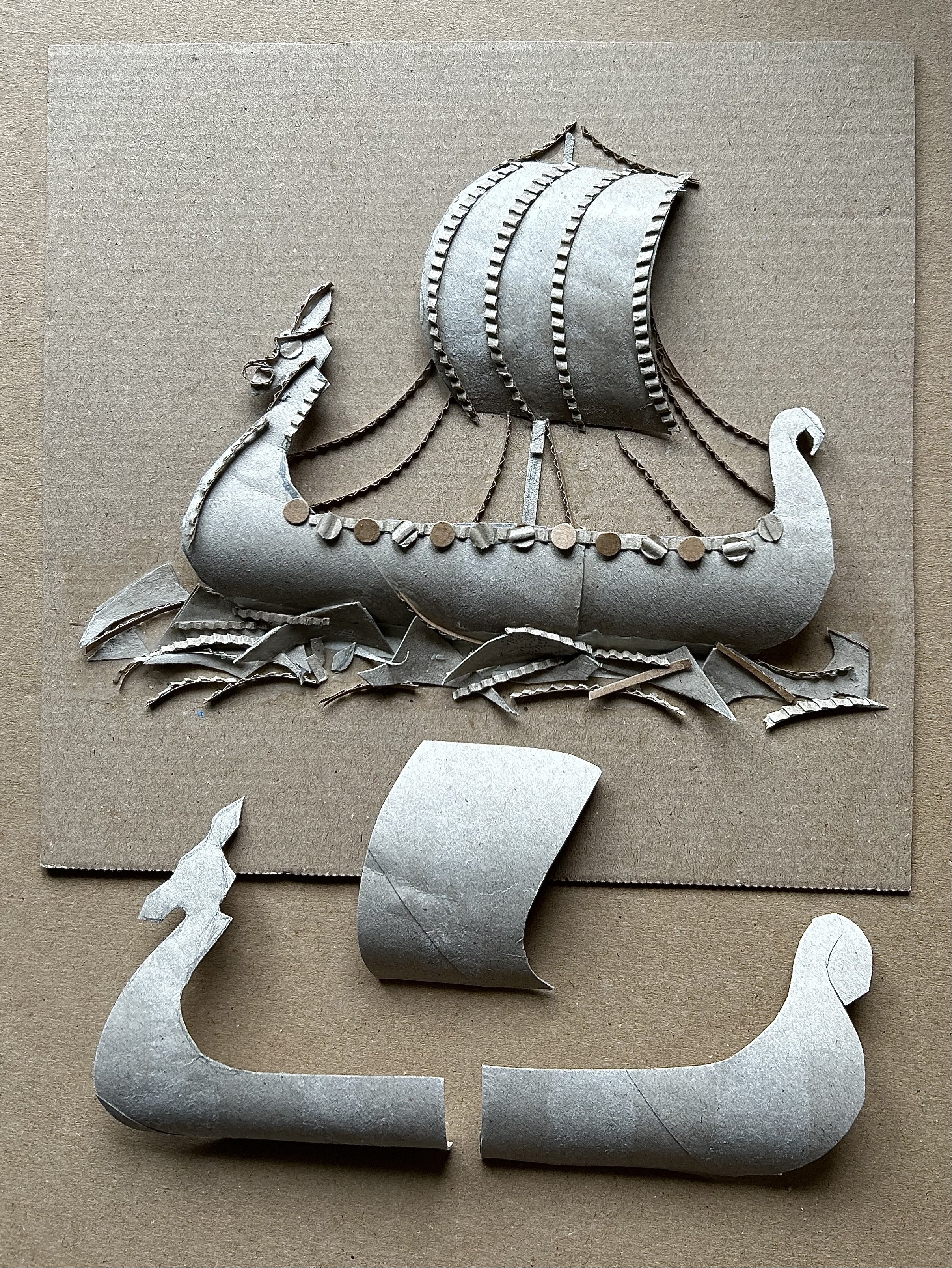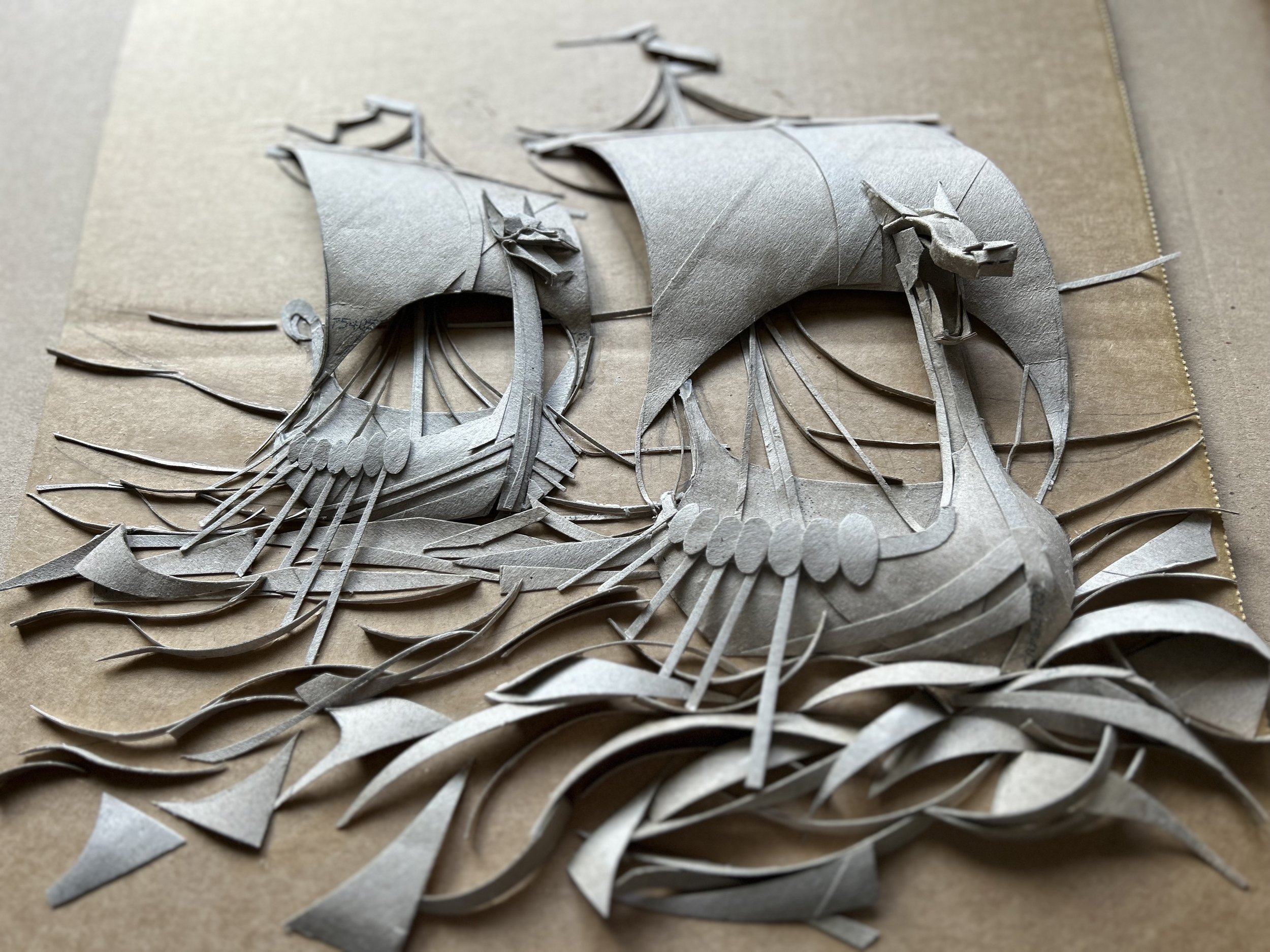Cardboard Tube Viking Longship
Often, one piece of work leads to another, or influences the next. I’ve created quite a few simple ‘ship’ designs and recently I was asked to do an online session demonstrating how you could create a Viking Longship. So this gave me the chance to really look at this and see how I could simplify or adapt the method.
So, as usual, what I’m trying to do is find a simple method, one which could easily be attempted by a child, but could also be made more complex. I always try to be mindful of the materials, often using what I already have available. Similarly, I limit what tools are needed, I don’t use craft knives and try to work out ways of using just scissors instead if I can. Finally, I try to use ‘all’ of the initial materials, to be resourceful, and throw away as little as possible.
In this instance I worked out that if you cut the two halves of the hull of the boat from a ‘flattened’ toilet roll tube, the space left in the middle would be big enough to cut a sail from. The two very narrow strips on the far right side make the mast, and then all of the other scrap pieces can be saved to make the sea. This is what I call ‘pure making’ and really comes from a life of making and designing and, more recently, from a desire to share projects that are more sustainable.
So, above you can see how those two halves become the ‘ship shape’ and how the sail can be cut with curved sides, to give the illusion that it is being blown by the wind. This hints at the direction in which the boat is travelling. You can also see in the above photo how I’ve incorporated the scrap offcuts from the tube into the sea. I’ve then used some scrap corrugated cardboard to add other details. Using thin strips for rigging, details on the ships hull, and again using up and leftover pieces for the sea. Finally I’ve used a hole-punch to pop out some small circles to use as shields.
Here’s a little short video of me putting this together. For this project I’ve just used some strong PVA glue to fix all of the pieces onto a cardboard background, sometimes using a little bit of masking tape to temporarily hold things in place.
This could obviously be painted, but in this example I’ve left it as a simple cardboard version.
Typically, this project inspired me to make a much more complex version, altering the perspective and using the convex and concave elements of the cardboard tubes to heighten the 3D effect . . .
Cardboard tubes are incredibly versatile, and even though this second piece is incredibly complex, it uses exactly the same techniques and materials as the simpler design does.




